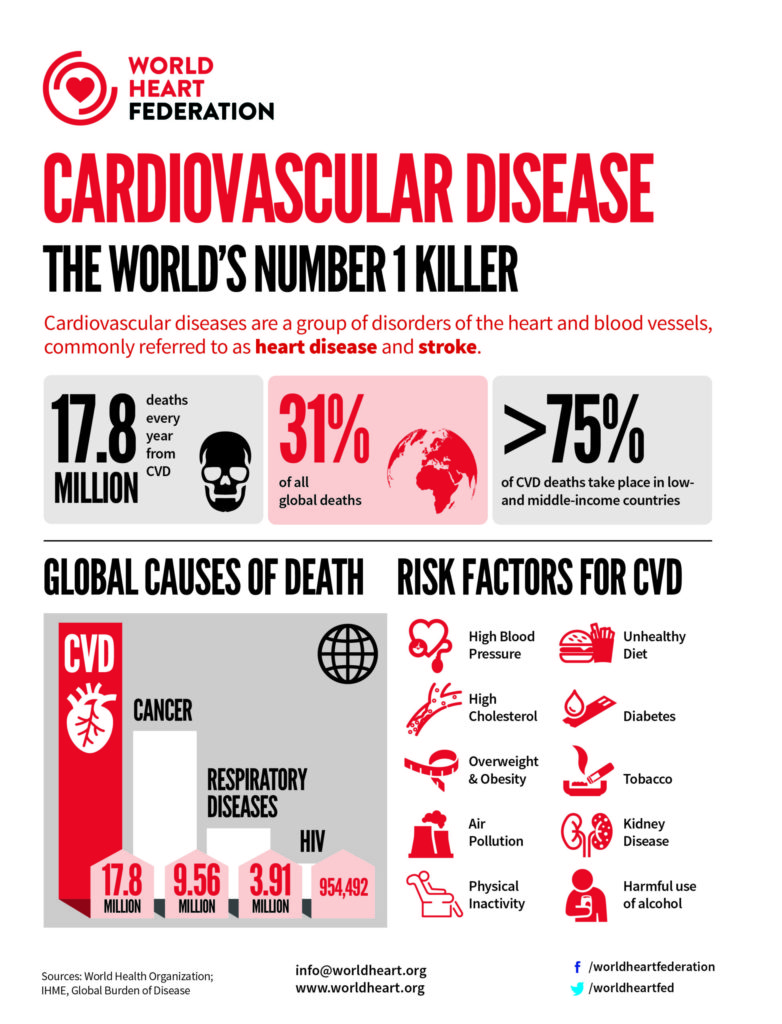Overview
Cardiovascular diseases (CVDs) are the number 1 cause of death globally, taking an estimated 17.8 million lives each year 31% globally. 75% of CVDs death occur in low and middle income countries. 85% of all CVDs are due to heart attack and strokes.
CVDs are a group of disorders of the heart and blood vessels and include coronary heart disease, cerebrovascular disease, rheumatic heart disease and other conditions. Four out of 5CVD deaths are due to heart attacks and strokes, and one third of these deaths occur prematurely in people under 70 years of age.
Individuals at risk of CVD may demonstrate raised blood pressure, glucose, and lipids as well as overweight and obesity. These can all be easily measured in primary care facilities. Identifying those at highest risk of CVDs and ensuring they receive appropriate treatment can prevent premature deaths. Access to essential noncommunicable disease medicines and basic health technologies in all primary health care facilities is essential to ensure that those in need receive treatment and counselling.
Symptoms
Millions of people worldwide struggle to control the risk factors that lead to cardiovascular disease, many others remain unaware that they are at high risk. A large number of heart attacks and strokes can be prevented by controlling major risk factors through lifestyle interventions and drug treatment where necessary.
The risk factors for CVD include behavioural factors, such as tobacco use, an unhealthy diet, harmful use of alcohol and inadequate physical activity, and physiological factors, including high blood pressure (hypertension), high blood cholesterol and high blood sugar or glucose which are linked to underlying social determinants and drivers, such as ageing, income and urbanization.

